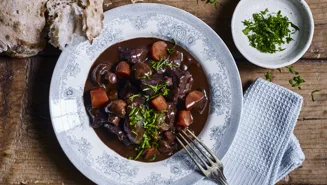
No, yoghurt is not lactose-free. It is made from milk, which contains lactose – a sugar found in milk and milk-derived products. The fermentation process in yoghurt production helps reduce some of its lactose content. The specific amount can vary depending on factors such as the fermentation process, the type, and the brand.
Start the day with a delightful bowl of creamy yoghurt brimming with your favourite toppings or enjoy it as a sweet afternoon snack. There are various types of lactose-free yoghurt to choose from.
What is lactose-free yoghurt?
Lactose-free yoghurt is yoghurt that is produced in a way to make it lactose-free, typically by using lactose-free milk. It has the same tangy flavour and creamy texture as regular yoghurt, so you can use it the same way.

Does yoghurt have less lactose than milk?
Yoghurt typically contains less lactose than milk due to the fermentation process. Fermentation introduces bacteria that feed on lactose, converting it into lactic acid. This results in a reduced lactose content compared to the original milk.
However, the amount of lactose can vary between brands and types, so make sure to check labels or consult with a healthcare professional if you are trying to avoid lactose completely.
Is yoghurt high in lactose?
No, yoghurt is not high in lactose. During the yoghurt production process, the lactose is transformed into lactic acid, making the lactose content lower. Some yoghurt types will only contain trace amounts. Nonetheless, the lactose content can still vary depending on factors such as fermentation time, bacterial strains, and processing methods.
On average, regular yoghurt contains about 4-6 grams of lactose per 100 grams depending on, for example, which type of milk it is made from. The lactose content can be lower in some varieties such as Greek-style yoghurt or other strained yoghurts, which may contain around 2-4 grams of lactose per 100 grams. But keep in mind that the amount can vary greatly depending on the type and brand.
How can yoghurt be lactose-free?
You might be wondering how a dairy product can be free of lactose, but it is possible. There are a few ways to make yoghurt with little or no lactose. Let us take a closer look at some of them:
- Using milk treated with lactase, in other words, lactose-free milk: Often referred to as 'lactose-free milk', this is essentially regular milk that has had the lactose broken down into simpler sugars: glucose and galactose, using the enzyme lactase.
The process for making yoghurt with this treated milk remains the same as its regular counterpart: the milk is heated to kill any harmful bacteria, then cooled, and then a yoghurt starter culture with live bacteria is added.
These bacteria turn the sugars in the milk into lactic acid, giving the mixture its tangy taste and thick consistency. Since the milk is already lactose-free, the yoghurt will be too.
- Fermenting for an extended period: This will not make lactose-free yoghurt but rather yoghurt with low amounts of lactose, in some cases, only trace amounts.
As yoghurt ferments, live bacteria break down lactose into lactic acid, and letting it ferment for a longer time means that lactose gets consumed by the bacteria. A longer fermentation means a lower lactose content.
If you are in doubt, remember to check in with a healthcare professional as well as check the labels to make sure of a product’s lactose content and if it is certified lactose-free.

Different types of lactose-free yoghurt
The market for products without lactose has expanded significantly, and this includes a delightful variety of lactose-free yoghurt.
Greek yoghurt is a popular option for many thanks to its thick, creamy texture. It is made by straining out the whey, which not only gives it its distinct texture but also reduces the lactose content. But you can also get it completely lactose-free, in other words, produced in a way to remove lactose.
It retains the same creamy texture and taste as its regular counterpart. You can read more about this in our article 'Is Greek yoghurt lactose-free?'.
If you are looking for a versatile lactose-free option, consider plain yoghurt. Enjoy it on its own or use it as a base for various dishes, dressings, sauces, smoothies, desserts, and much more.
For a more adventurous and flavourful experience, go for flavoured options such as strawberry, peach, and blueberry. These are perfect for satisfying your sweet tooth.
If you want to know more about this world of lactose, you can explore our articles ‘Is lactose-free dairy-free?’, ‘Lactose-free foods’, and ‘What is lactose-free milk?’.







































